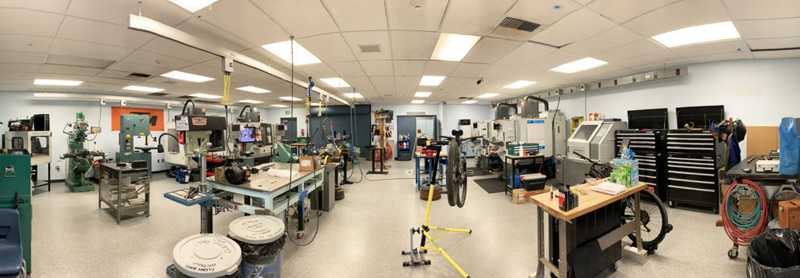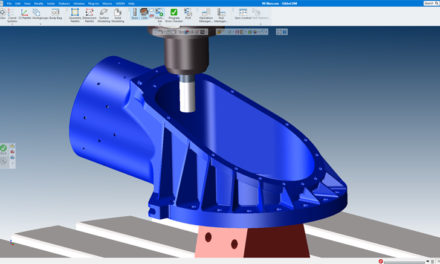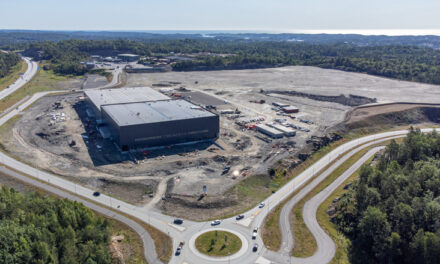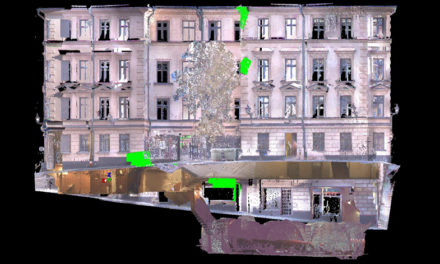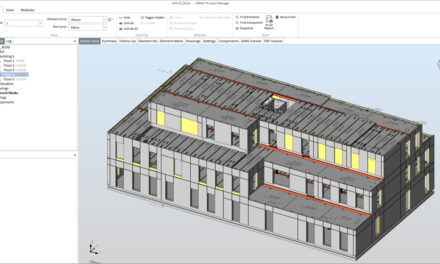At Temescal Canyon High School, in Southern California, the Engineering Design program has advanced into an academy-style STEM curriculum. Students are grouped together into a program of engineering, math and science, in addition to an OSHA safety class. Coordination of the curricula helps students understand the need to be well versed in diverse subjects for career development in today’s highly automated manufacturing businesses.
PROJECT DETAILS
The Engineering Design program at Temescal Canyon High School includes a first-class machine shop, complete with four Haas CNC mills and a CAD/CAM lab loaded with SOLIDWORKS and Mastercam software. The lab also includes several 3D printers and the tooling, measuring, and related equipment needed for a wide range of projects. The students will get all their engineering from instructor Robert Parks, with other instructors teaching the math and science courses. Projects are coordinated jointly and are intended to answer the students’ question, “When will I ever need to use this stuff?”
 As a bonus, the students earn college credit every year that they are in the program. This year’s freshmen, for example, will earn five units of college credit. Right from year one, they’re building skills that will help them start a career.
As a bonus, the students earn college credit every year that they are in the program. This year’s freshmen, for example, will earn five units of college credit. Right from year one, they’re building skills that will help them start a career.
– We’re fortunate in that we have a lot of machine shops in the area, continues Parks. – They’ve taken a big interest in our program, because they wind up hiring a lot of our students, both as interns during the school year and as employees after graduation. I listen to them when they tell me, ‘Hey, you should be teaching them this program or that skill, because that’s what we really need in our shop.’ They are my advisory board when it comes to deciding on obtaining and using software programs and CNC equipment. In addition to these generous advisors, Peter Mancini, Education Product Manager at Mastercam, is also a dependable go-to source when it comes to assistance with a wide range of CAD/CAM projects.
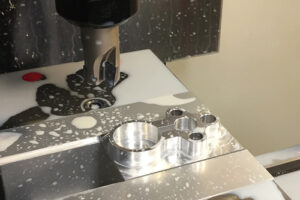 As freshmen and sophomores, these students will learn Mastercam for SOLIDWORKS. When they are comfortable with that, they go to stand-alone Mastercam. – This stage in the curriculum, says Parks, “lets them hit the ground running with Mastercam for creating their toolpaths when we introduce them to more complex CAD/CAM projects. This way, they are learning about toolpaths, speeds and feeds, cycle times, and the rest of the basics that give them a foundation for what’s to come in the rest of our four-year program.
As freshmen and sophomores, these students will learn Mastercam for SOLIDWORKS. When they are comfortable with that, they go to stand-alone Mastercam. – This stage in the curriculum, says Parks, “lets them hit the ground running with Mastercam for creating their toolpaths when we introduce them to more complex CAD/CAM projects. This way, they are learning about toolpaths, speeds and feeds, cycle times, and the rest of the basics that give them a foundation for what’s to come in the rest of our four-year program.
In the shop, as freshman they learn to be CNC machine operators, loading parts and running the machine. As sophomores, they learn how to do tooling offsets, how to set their origins and monitor the Mastercam programs. As juniors, they learn how to do machine setups, how to fixture parts, how to make soft jaws to hold a variety of parts and complete their assigned projects.
The seniors “run” the shop. Each machine will have a plaque that states, for instance, “Haas Mill #1” and “Principal Engineer” with the name of a senior. That senior is in charge of that machine and will do all the tooling and work offsets, be responsible for maintaining the machine, and assist in supervising younger students working on projects using that machine. It teaches responsibility and gives these students the leadership experience that is so important to prospective employers.
– There’s a really cool project that we’ve been doing with our students for a while now, says Parks. – My wife, Kathy, and I started and still coach our school’s mountain bike racing team, the Titans. Six years ago, our team of about twenty kids raced mountain bikes against teams from other schools in 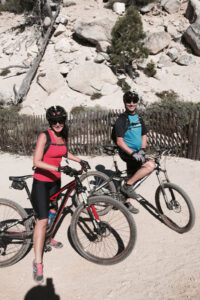 the area. The races are really hard and just finishing a race is a big deal for many of the kids. I thought it would be great if we could tell them, ‘If you finish the race, you get a medal.’ And, I thought, Why couldn’t my students make those medals? Today, six years later, we are still making medals for every kid who finishes the race. My students design the medals, program them in Mastercam, and produce them on our CNC machines.
the area. The races are really hard and just finishing a race is a big deal for many of the kids. I thought it would be great if we could tell them, ‘If you finish the race, you get a medal.’ And, I thought, Why couldn’t my students make those medals? Today, six years later, we are still making medals for every kid who finishes the race. My students design the medals, program them in Mastercam, and produce them on our CNC machines.
However, because they grew into such a large mountain bike team with most of the kids finishing each race, manufacturing cycle times became an issue. – Today, even though all the kids, even freshman, design the aluminum medals, says Parks, – I have the seniors charged with the task of programming the medals in Mastercam for the lowest, most efficient cycle times, including the use of Mastercam’s Dynamic Milling feature ensuring fast, accurate tool paths. This is a good example of ‘real-world’ manufacturing, where time is money.

